Non-Toxic Natural Oils That Can Be Used as Sunscreen
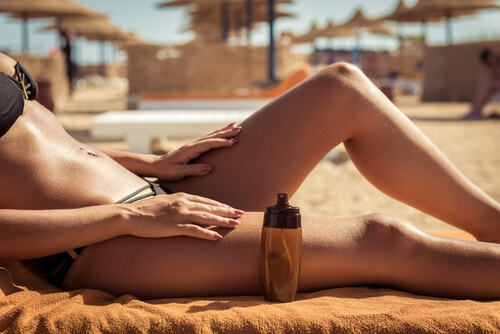

Reviewed and approved by the doctor Nelton Abdon Ramos Rojas
Are you getting ready for a vacation? Would you like to know what natural alternatives to use to protect against UV damage? If so, continue reading this article, which lists the best non-toxic, natural oils that can be used as a sunscreen.
The most effective oils with natural sunscreen
We need to point out that even if you rub on sunscreen or homemade oils, ultraviolet rays can be very harmful. So, make sure you do the following as well:
- Wear a hat.
- Avoid being out all afternoon.
- Apply more sunscreen every 2 hours, or when going out into the ocean.
Be careful and observe the appropriate hours for sunbathing. Try to go back to your hotel, house or wherever you’re staying (even a restaurant can provide refuge) when the sun’s rays are strongest.
And don’t rely on cloudy days! The sun can be just as powerful. Just because you can’t feel it on your skin doesn’t mean you can’t burn.
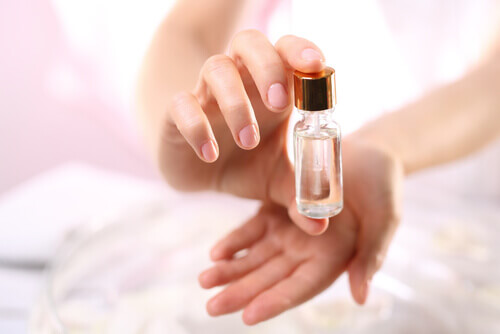
The best non-toxic, natural oils that can be used as sunscreen include:
Avocado oil
You must mix this with an oil of at least 15 SPF. You can find these oils in herb stores or natural food centers.
If you feel so inclined, you can also remove the meat from an avocado and apply it to your skin. Don’t use too much though otherwise, you’ll end up green, like the Incredible Hulk! All you need is one layer to reduce UV ray absorption.
Wheat germ oil
This is an inexpensive and uncolored good oil that (you won’t look like a walking salad). It’s a great antioxidant and will provide your skin with vitamin E.
I’m sure you already know, but this nutrient improves skin health, prevents premature aging, and gets rid of wrinkles. And if that weren’t enough, it has the ability to revert or prevent damages caused by ultraviolet rays.
It is also used to treat psoriasis, eczema, and burns.
We recommend you read:
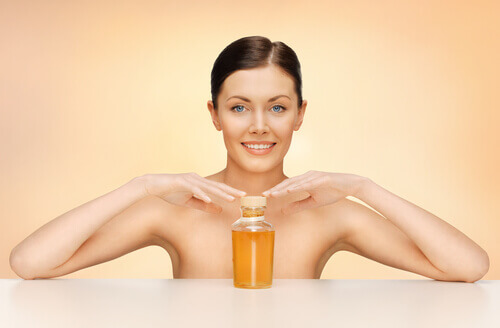
Coconut oil
We can use coconut oil in lots of different ways…it is more than versatile! It has a characteristic smell which makes it the most desirable of oils for summer.
Not only does it protect your skin, but it also protects hair. Mix it with at least 8 SPF, or more, and spread it over your body, hair, and don’t forget your scalp. You’ll smell like a pastry…truly irresistible.
Carrot seed oil
Consult a trusted herb store to see if they carry this. You probably already know that carrots are great for skin, but this essential oil from carrot seeds only multiplies its benefits.
This oil is better than any cream sold in stores. It contains vitamin A and carotene and is a veritable squadron of skin protection. It also helps create a beautiful natural bronze color without burning you or turning you red as a shrimp.
Carrot seed oil can also be used for other skin treatments, like for treating eczema.
Almond oil
This is one of the most popular essential oils. It has a natural SPF of 5, which is slightly low, but it does contain a large source of vitamin E, which helps keep skin young and soft.
It’s also great for hair as it helps with softness and shine. You could also use it in a mixture with another type of cream.
Red raspberry oil
While not readily available, the good thing about this oil is that it offers an extremely high SPF protection, between 30 and 50. It contains vitamins A and E, which keep skin young and reduce inflammation.
It is thick in consistency and does not need to be mixed with anything else. The downside is that it doesn’t smell like fruit, but rather has a strong, mildly unpleasant odor for sensitive noses. But the good news is that it goes away within an hour!
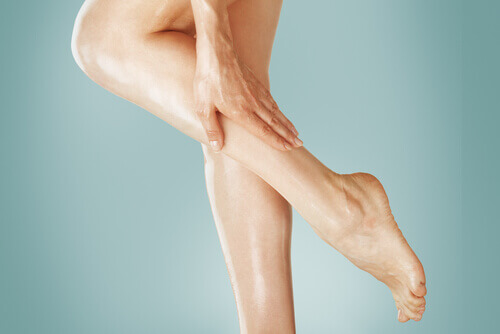
Soy seed oil
Used in the East for cooking (a lot of Asian dishes are prepared with soy oil), this oil also contains great properties for protecting the skin from the sun. Just a few drops are sufficient for shielding the sun from UV rays. It also softens skin and it has virtually no odor.
Olive oil
This is the much-loved and indispensable oil, which of course, made this list. I’m sure you already know its one thousand and one properties, both internal and external usage.
But you may not know that it also softens skin, protects against sun damage, and provides plenty of antioxidants for treating burns.
And as if that weren’t enough, it also works wonders on the hair and scalp. And you don’t need to go get it, because you already have it in your kitchen!
We recommend you read:
Jojoba oil
Jojoba is commonly used in beauty treatments, like shampoo and soap, for example. It is great for treating flaking or dry skin. It moisturizes and protects against the sun, but be careful because this oil is not great at protecting against UV rays. However, if we combine it with another cream, it becomes more useful.
Macadamia oil
This oil is rich in vitamin E and minerals, including potassium and phosphorus. It is the excellent homemade sunscreen for Australian beaches. Macadamia essential oil can be found in whole food stores.
Other oils used as a natural sunscreen
To finish this list, here are a few more options for protecting yourself from the sun:
- Sesame seed oil
- Hemp seed oil
- Karite butter
- Peanut oil
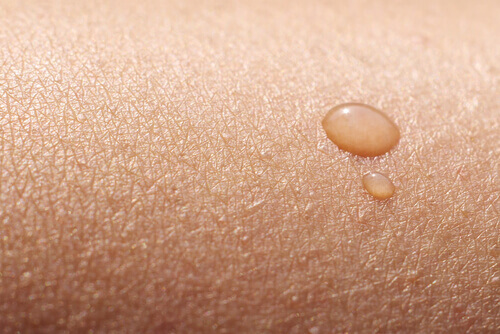
All cited sources were thoroughly reviewed by our team to ensure their quality, reliability, currency, and validity. The bibliography of this article was considered reliable and of academic or scientific accuracy.
- Tamayo, V., Úmariega, M. A. G. O., Amayo, M. A. V. E. T., & Amar, Á. N. S. Á. (2009). La radiación ultravioleta. Su efecto dañino y consecuencias para la salud humana. Redalyc Sistema de Información Científica. https://doi.org/10.1016/j.physb.2007.08.181
- Walsh, K. (2018). La radiacion UV y el ojo*. Eye Health Advisor. https://doi.org/eye health advisor
- Vinicio, M., & Vega, S. (2008). la capa dE ozono. Revista Biocenosis.
- Vallejo, E. O., Vargas, N., Martínez, L. M., Agudelo, C. A., & Ortiz, I. C. (2013). Perspectiva genética de los rayos UV y las nuevas alternativas de protección solar. Revista Argentina de Dermatologia.
This text is provided for informational purposes only and does not replace consultation with a professional. If in doubt, consult your specialist.








